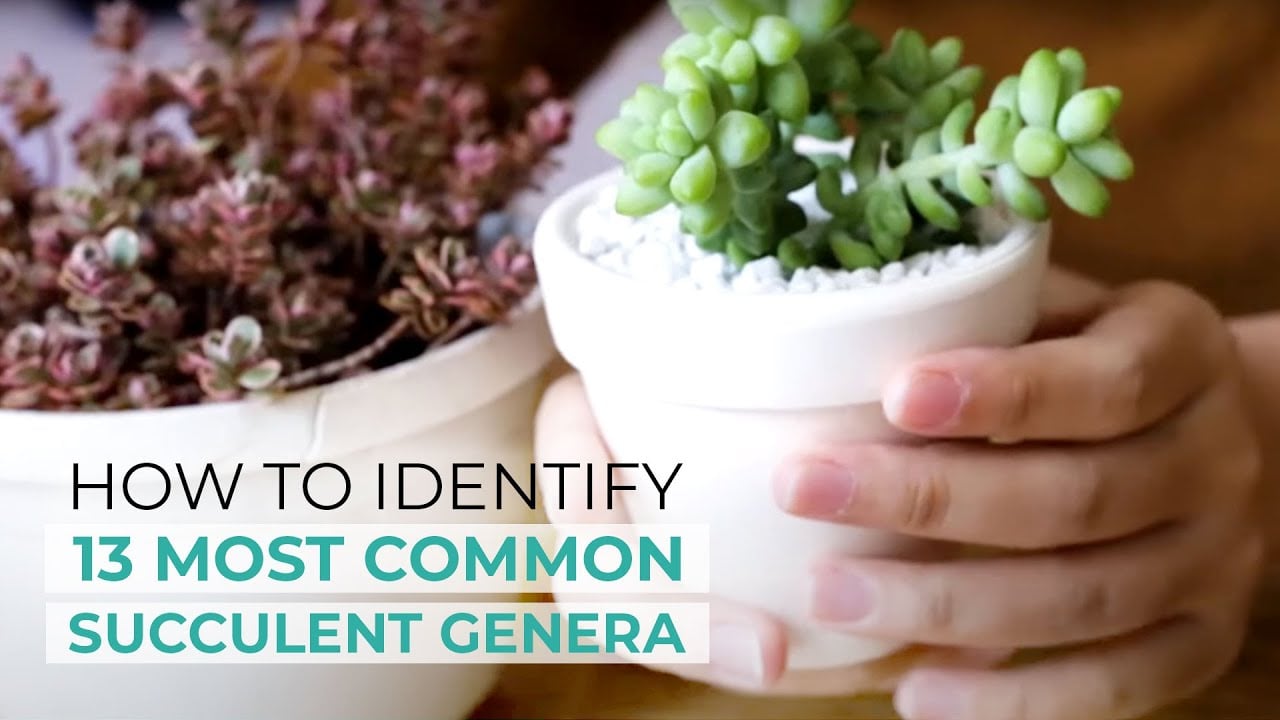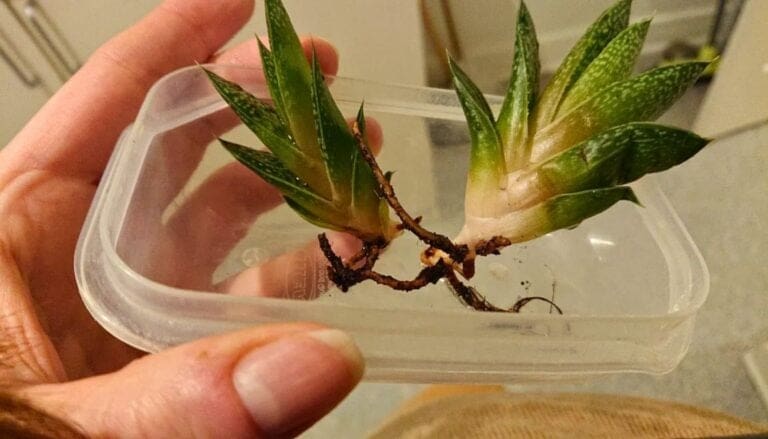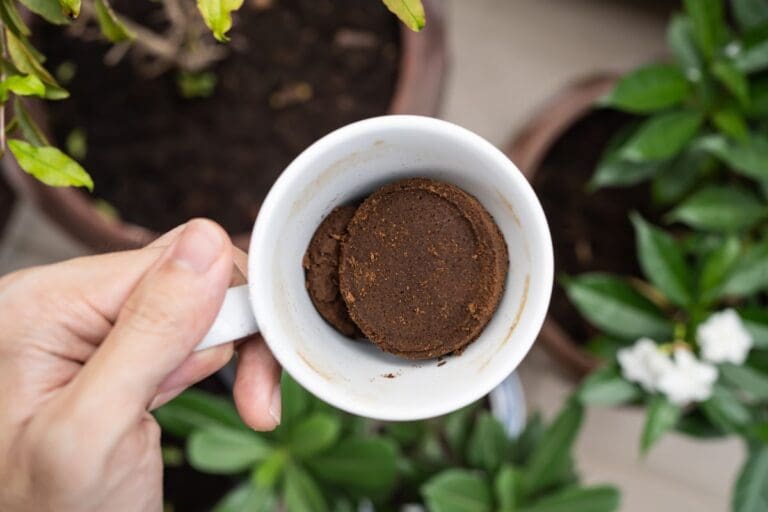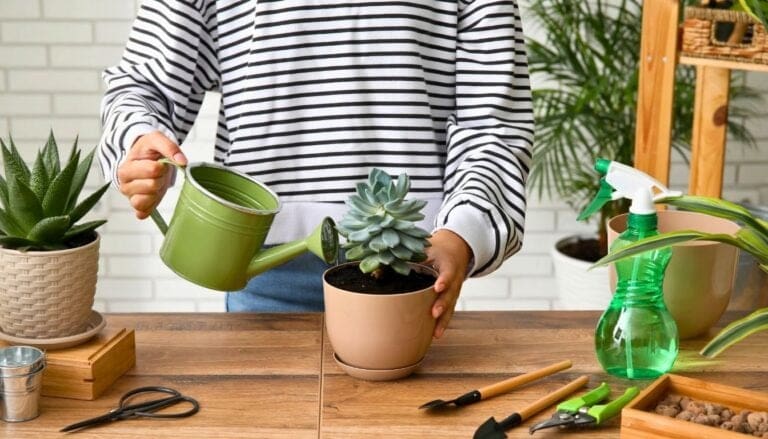What Type of Succulent Do I Have?
Are you staring at your little green friend and wondering, “What type of succulent do I have?” 🌵 Don’t worry, I’ve been there too!
Succulents come in all sorts of shapes and sizes, each with their own unique traits. Whether it’s tiny and rosette-like, or tall and spiky, each succulent has a story to tell.
To figure out what type of succulent you have, pay attention to features like leaf shape, color, and size.
For instance, if your plant has thick, pointy leaves, it might be an Aloe. Maybe you have something with wide, flat leaves? It could be a Jade plant.
These details are like clues to solving your succulent mystery.
Do any of these descriptions ring a bell? 🤔
Let’s dive into this fascinating world of succulents together.
With a bit of inspection and curiosity, you’ll soon be a pro in spotting these green gems.
Plus, a little detective work will make you appreciate your plant even more! Who knew plant identification could be this fun? 🌱

Please note: Simplify Plants is reader-supported. As an Amazon Associate, I earn from qualifying purchases made by our readers with no extra cost added to you all! Some links in the post are affiliate links and I get a commission from purchases made through links in the post.
Identifying Your Succulent
Identifying a succulent can be like a fun puzzle!
You’ll want to look at its shape, size, leaf texture, color, flowers, and how it grows.
Let’s dive into these colorful, unique plants together! 🌵
Shape and Size
When figuring out what kind of succulent you have, start by checking its shape and size.
Some succulents, like cacti, are tall and cylindrical, while others, like rosettes, are more compact.
Think about whether it grows close to the ground or reaches up for the sun.
I’ve seen some that are only a few inches tall, while others can reach a foot or more.
Use a ruler to measure if you want to be precise.
Have you noticed how some plants hug the ground while others shoot upwards with confidence?
It’s like judging a dance performance! 💃
Leaf Texture and Color
The texture and color of the leaves tell a lot.
Are they smooth, waxy, or fuzzy? Take a close look—some might even feel bumpy or velvety.
Colors range from bright green to purples, reds, and blues.
How cool is it to have a little rainbow on your windowsill? 🌈
I love feeling the difference in textures.
It’s like the plant has its own personality—some are prickly, and others are soft like a teddy bear. Have you felt yours?
Flower Characteristics
When a succulent blooms, it can reveal a lot about its type.
Do the flowers have a certain color, shape, or size?
Some succulents, like Echeveria, sport star-shaped flowers. Others, like Aloe, have tall, vibrant spikes.
Isn’t it fun to see them surprise us with a burst of color?
If your plant is flowering, take a picture to remember this moment.
It’s like having a photo of your plant’s birthday party! 🎉
Growth Patterns
Notice how your succulent grows over time.
Does it spread out wide, grow upward, or stay in a tidy cluster? Maybe it grows new little plants, called offsets, around its base.
Some might grow tall, while others expand sideways.
I always find it interesting to see how my succulents change with the seasons.
Growth patterns can show you how to care for your plant—where to place it and how much water it needs.
Think of it as learning your plant’s favorite hobbies!
What tricks do your succulents have up their green sleeves?
Common Types of Succulents
Succulents are amazing plants with thick leaves full of water. They are perfect for adding a bit of green to small spaces. 🌵
Echeveria Varieties
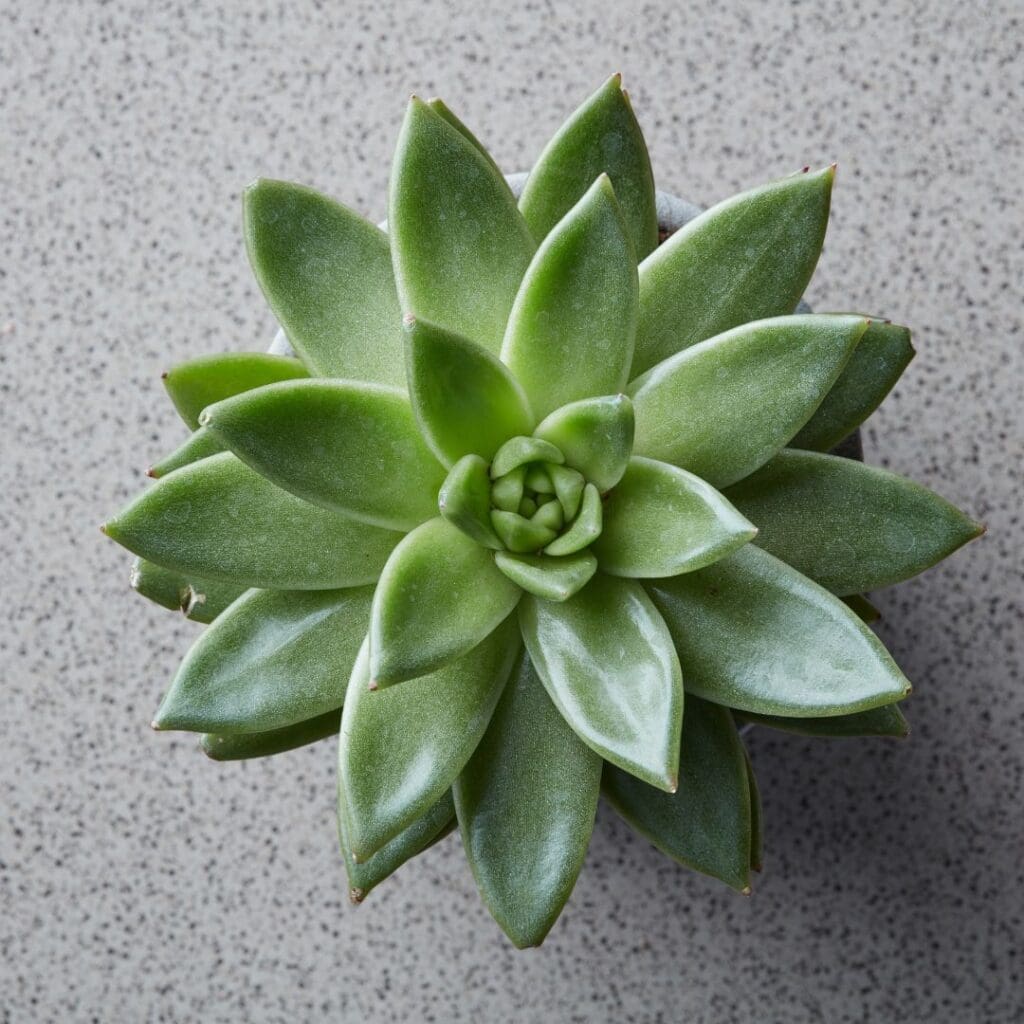
I love Echeveria! These succulents have pretty, rose-like shapes and come in lots of colors.
Some are a gentle green, while others can be purple or even icy blue. It’s cool how they can change color depending on sunlight and temperature.
If you’re like me and sometimes forget to water your plants, Echeverias are forgiving.
They prefer bright, indirect light and well-drained soil.
Great for windowsills, they add a sweet, calming vibe to any space. 🌿
Sedum Species

Sedum plants are another favorite of mine. They have small, round leaves and often create beautiful ground covers.
Some varieties, like the “Burro’s Tail,” can spill charmingly out of a pot.
Sedums are hardy and pretty easy to care for. They enjoy full sun but can do well in partial shade, too.
With a little attention, they thrive almost anywhere.
It’s like having a tiny garden right at home!
Sempervivum Forms
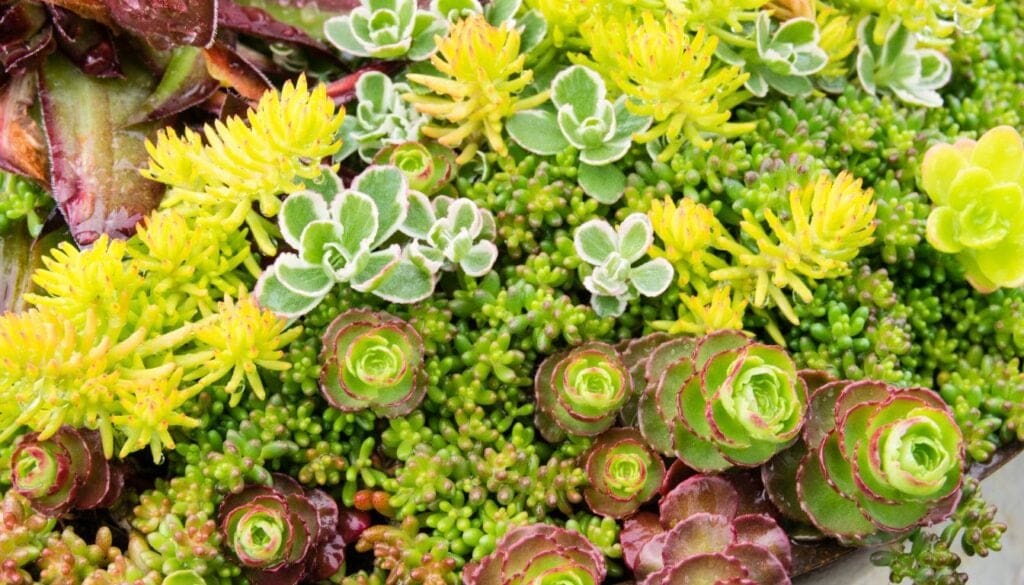
Known as Hens and Chicks, Sempervivum plants are incredibly fun to grow.
These cuties form rosettes and produce little offsets that look like baby chicks.
Watching them multiply is like witnessing a mini succulent family grow!
They are cold-hardy and can survive through snow—truly tough little fellows.
They love sunny spots and rocky, well-draining soil.
How cool is it that they can handle different climates?
Aloe Varieties
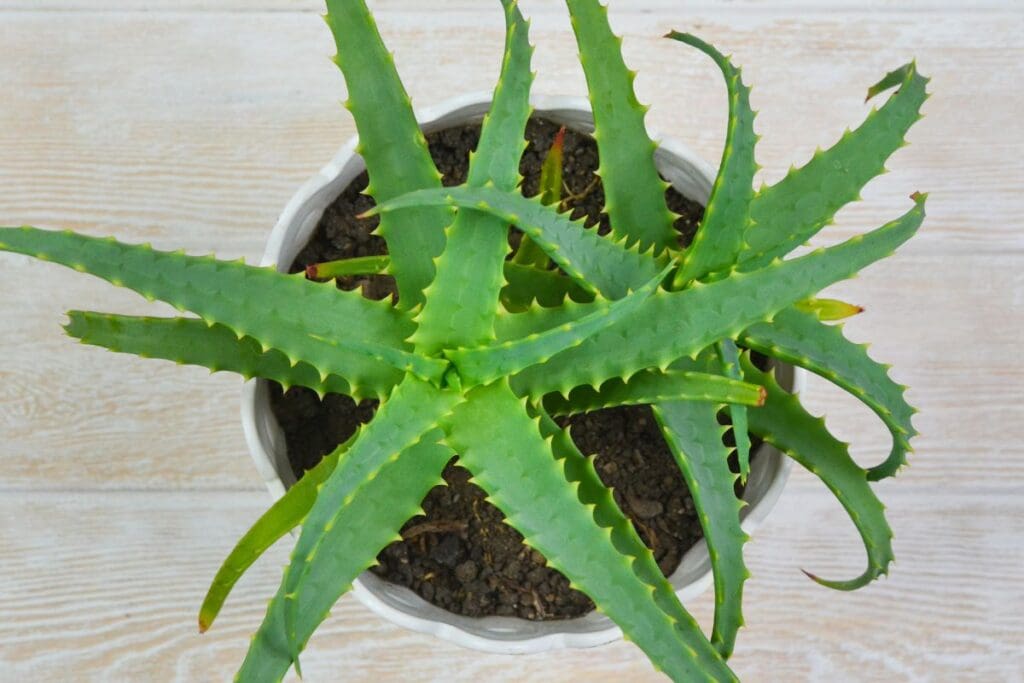
I’m sure you’ve heard of Aloe Vera, but did you know other Aloe species exist?
Aloe plants have long, spiky leaves and are not just good-looking; their sap can be soothing for burns.
These succulents prefer lots of sunlight and need watering only when the soil dries out.
If you’re seeking an easy-care plant with a practical side, Aloe is a fantastic choice!
Who wouldn’t want a pretty plant that doubles as a healing helper? 🌞
Agave Species

Agave plants are striking with their thick, pointy leaves and dramatic look.
Not just for tequila production, they make remarkable garden or indoor plants.
I find their geometric shapes awe-inspiring.
If you live in a warm climate, Agave is perfect. It loves sun and can handle a bit of neglect.
Just be cautious of those sharp leaf tips!
They’re definitely conversation starters in any plant collection.
Haworthia Types

Tiny and delightful, Haworthia plants are ideal for small spaces.
Their unique stripe patterns and rosette forms make them eye-catching.
I adore displaying them in cute, mini pots on my desk.
They flourish in bright, indirect light and don’t need a ton of water.
With their low maintenance, they’re great for beginners or anyone with a busy schedule.
Plus, they’re adorable, don’t you think?
Cacti

When talking Cacti, most think of desert plants with spikes.
They come in so many shapes and sizes, from the tall Saguaro to the tiny ball cactus. These plants store water so well, they’re almost foolproof.
Cacti love sunlight, making them great for sunny spots in your home.
With some light humor, I’d say you could probably forget to water them sometimes.
Just be mindful of the sharp spines—and enjoy the unique character they bring to your space. 😊
Caring for Your Succulent
I love taking care of my succulents because they are both beautiful and low-maintenance.
To keep them healthy and thriving, I pay attention to their sunlight needs, watering schedule, soil preferences, fertilizer, and when it’s time to repot them. Let’s get into it!
Sunlight Needs
It’s important to know how much sunlight your succulent needs.
Most succulents like bright, indirect sunlight.
Me? I place mine near a window where they can soak up the morning sun. 🌞
Too much direct sun might cause your succulent to get sunburned!
I remember my own little aloe that got scorched because I left it outside too long. Oops! 😅
If your plant is stretching or turning pale, it might need more light. On the other hand, if its leaves are turning brown or crispy, it could be getting too much direct sun.
Adjust their location as needed to keep them happy.
Watering Schedule

One of the most important things is avoiding overwatering.
Trust me, I’ve killed a few succulents with kindness! 🌻
I only water my succulents when the soil is completely dry. This might be once every couple of weeks.
During colder months, they need even less water.
It’s like they go on a little vacation!
Remember, it’s better to underwater than to overwater.
Succulents store water in their leaves, so they can go without water for longer than you’d think.
Shriveled leaves might mean it’s thirsty, so keep an eye out!
Ideal Soil Mix
Succulents need well-draining soil.
Regular potting soil can hold too much moisture, which isn’t good for them.
I use a special cactus or succulent mix that’s a blend of sand, perlite, and soil.
Sometimes, I mix my own at home by combining regular potting soil with sand and pumice.
This mix lets water drain quickly, which keeps my plants healthy. 🪴
If you see your succulent looking sad and mushy, it might be due to poor drainage. Time for a soil upgrade!
Fertilization

Even though succulents are tough, they do appreciate a little boost now and then.
I fertilize mine during their growing season in spring and summer.
I use a balanced, water-soluble fertilizer that’s diluted to half strength.
Too much fertilizer can actually harm succulents, so a little goes a long way!
It took me a while to realize that overdoing it made my jade plant look funky. 🤔
I learned my lesson and now give them just enough for healthy growth.
Repotting Tips
Succulents don’t need repotting often, but when their roots outgrow the pot, it’s time.
I usually repot every couple of years.
When I repot, I choose a slightly bigger pot than the one they’re in. It gives the roots room to spread.
I always make sure the new pot has a drainage hole.
During repotting, I carefully remove as much of the old soil from the roots as I can without damaging them.
Once they’re settled into their new home, I wait about a week before watering them to let them adjust.
It’s a little like giving them some space to settle in comfortably. 😊
Do you have any favorite tips for repotting? I’d love to hear them!
Troubleshooting Common Issues
Succulents can sometimes be tricky. Let’s check out the common problems like pests, too much water, bad lighting, and root rot.
Pests and Diseases
Oh no, bugs! 😱
Have you ever noticed tiny critters on your succulents?
Aphids, mealybugs, and spider mites love these plants.
I find that spraying a gentle mix of water and a bit of dish soap helps. Another option is using neem oil.
Diseases like fungus can hit too. If you see weird black spots, it might be a sign.
Keep leaves dry and ensure good airflow around your plant. This helps to avoid pesky problems.
Overwatering Symptoms

Oops! Did I water too much?
Wilting, mushy leaves, and a bad smell are signs.
It’s tempting to drench them, but succulents need less water than you might think.
Let the soil dry completely between waterings. And always use a pot with drainage holes.
This small step can make a big difference!
Test the soil by sticking your finger in it. Is it dry? If yes, then it’s watering time.
Lighting Problems
Have you ever wondered if your plant is getting enough light?
Succulents love bright, indirect light. No light can make them stretch out awkwardly.
If they’re too close to a window, they might get sunburn.
I like to move mine around the house to find the perfect spot.
If indoors, get some grow lights, especially in the darker months. This can help your green buddy stay happy and healthy. 🌞
Two to three hours of morning sunlight is often perfect.
Handling Root Rot
Root rot is the silent killer. The leaves fall off, and the roots turn black and mushy. No fun at all!
What I do is take the plant out of the pot, trim the rotten parts with clean scissors, and let it dry out for a day or two.
Afterwards, repot in fresh, dry soil.
Avoid overwatering to prevent this nasty issue from coming back.
Keep an eye on your succulent. With some care, many can recover from root rot and thrive again!
Does your succulent have what it needs? Check in on them from time to time. 👀
Propagating Succulents
Propagation is one of my favorite ways to grow more succulents with ease. Whether it’s using leaves, cuttings, offsets, or seeds, each method has its charm. Let’s dive into how to do it!
Leaf Propagation

Ever try leaf propagation? It’s quite fascinating!
You just need to gently twist a leaf off the stem, ensuring it’s whole without any break.
Place the leaf on top of well-draining soil and mist it lightly every few days. No soil poking required!
Wait patiently as roots start to grow, usually within a couple of weeks.
It feels like magic when new baby plants, or “pups,” appear from the leaf! 🌱
Stay patient, and don’t water too much since overwatering is a common mistake. 😅
Cuttings
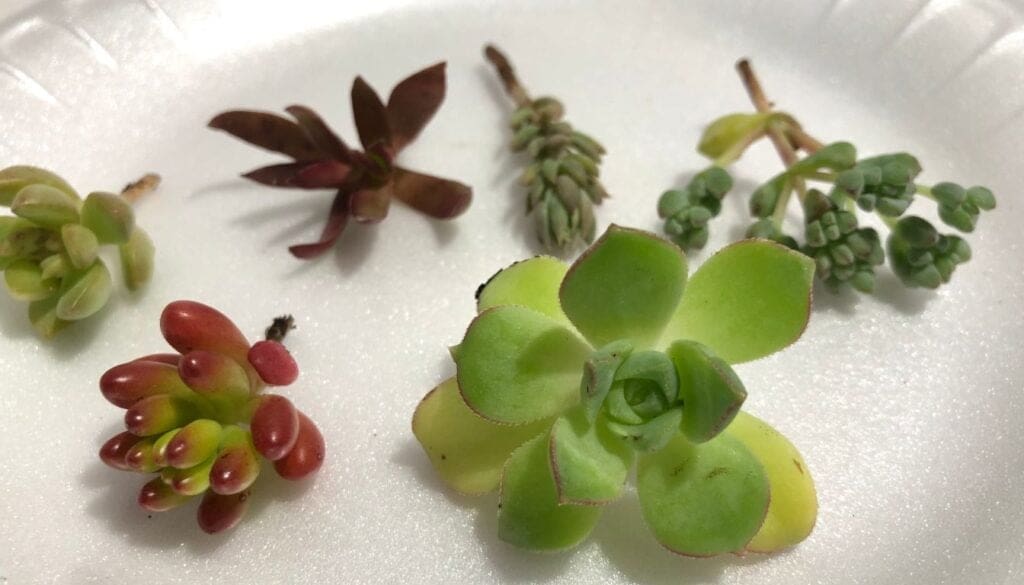
Cutting is like giving your succulent a new haircut and letting it grow back.
Start by snipping off a healthy stem with clean scissors.
Let the cut end dry for a couple of days before placing it in soil.
I usually try to push gently into the soil without damaging the end.
Watch as the cutting develops new roots within a few weeks.
It’s crucial to keep the soil slightly damp but not soggy.
Just imagine how proud you’ll feel when your plant starts growing vigorously again. Plus, it’s a great way to share the love with fellow succulent enthusiasts! 🌵❤️
Offsets and Pups

Got some extra pups? They’re adorable, aren’t they?
Offsets or pups grow at the base of mature succulents.
When they reach a decent size, carefully separate them from the main plant.
I like to use my hands, but you can use a clean knife if needed.
After separation, let them form a callous for a few days. Then, plant them in fresh soil.
It’s exciting to see these young plants grow and mature. They’re like little bundles of joy scattered around my garden!
Seeds

Starting succulents from seeds is an adventure in patience. Seeds are tiny and can take time to grow.
First, get some good-quality seeds, and sow them on the surface of sandy soil. Then cover with a thin layer of sand.
Mist the soil gently to keep it moist, and place the container in a warm spot.
It takes several weeks for the seeds to sprout, but the wait is utterly worth it! 🌺
By the time you see the first sprouts, you’ll feel like a proud plant parent. Who knew gardening could be so heartwarming? 🥰
Decorating with Succulents
I love adding succulents to my home decor because they’re easy and stylish. Their unique shapes and colors give any room a cool vibe. 🌿
One of my favorite spots to place a succulent is on my window sill.
They get lots of light, and it makes the room feel lively.
Plus, creating a mini garden on the windowsill looks cute and inviting.
I also like using succulents as centerpieces for my table.
Placing a few small ones in fun pots or even teacups makes dining more pleasant. 🥄
And guess what? They often become great conversation starters!
Are you a fan of hanging decor? Try hanging succulent planters.
They catch the eye and don’t take up space.
You can use macrame hangers for a trendy touch. They’re like jewelry for your walls. 🌿
Another idea: group succulents in a big pot. Mix various types for an eye-catching display.
It’s like a mini jungle! 🦁
Do you have a favorite plant in your collection?
Don’t forget about bathrooms. Adding a few succulents can quickly brighten things up. Make sure they get enough light!
Lastly, get creative with containers. Think about mugs, old jars, or small wooden boxes.
Adding succulents makes ordinary things look extraordinary!
Any thoughts on what you’ll try? 🌟
Seasonal Care Considerations

When it comes to your succulent’s seasonal care, timing is key!
In the warm months, succulents love basking in bright sunlight.
I often move mine closer to the window to soak up those extra rays! ☀️
Ever tried that? Make sure your succulent is getting at least 6 hours of sunlight each day.
During winter, I noticed that my succulents slow down.
They don’t need much water since they’re in a resting phase.
I cut back on watering and let the soil get completely dry between watering.
Have you noticed the same with yours? Careful not to overwater them during this period.
Feeding your succulent with fertilizer can boost its growth in spring and summer.
I usually give mine a balanced liquid fertilizer once a month.
Do you have a favorite brand or do you go DIY with your plant food? 😄
Just remember to skip the fertilizer in the colder months.
And who could forget about temperature?
Most succulents prefer warmer weather.
In winter, I keep mine indoors away from drafts and ensure the room temperature doesn’t dip below 50°F.
You don’t want them catching a chill, right?
What strategies do you use to care for your succulents seasonally? Share your thoughts! 💬
Frequently Asked Questions
Have you ever looked at your quirky little succulent and wondered what exactly it is? You’re not alone! Let’s explore how to identify them, useful apps, and key care tips. 🌵
How can I identify my succulent plant from a photo?
I find that snapping a clear, close-up photo of the plant is a great start.
Look for unique features like leaf shape, color, and growth pattern. These details can be essential clues in figuring out what type of succulent you have.
Are there any mobile apps available that can help with succulent identification?
Absolutely, there are some handy apps!
I love apps like PictureThis and PlantSnap.
These can scan a picture of your plant and give you possible names and care tips. It’s like having a botanist in your pocket! 📱
What are some common characteristics to look for when identifying succulents?
Common traits to check are fleshy leaves, rosette shapes, and woody stems.
Succulents often store water in their leaves, hence the thickness. Noticing these details can help narrow it down. It’s like playing plant detective! 🕵️♂️
How frequently should succulents be watered to maintain their health?
Watering is tricky!
I water my succulents once every 1-2 weeks during active growth seasons. In winter, they need even less.
Always check if the soil is dry before watering. Overwatering is a no-no! 💧
Can you provide a guide or chart for identifying different types of succulents?
I came across many online guides and charts that can help.
Websites like Succulent City offer downloadable charts. Having visual aids can really make the process easier, don’t you think?
What are some common succulent varieties that are easy to care for as houseplants?
Some of my favorites are the Aloe Vera, Jade Plant, and Echeveria.
They’re hardy and don’t demand much attention.
Plus, they make my living room look like a chic mini desert. 🌿
Recommended Garden Supplies
| Product Image | Our Recommended Gardening Supplies | Check Offers! |
|---|---|---|
Top Top
Top
Top
Top
Top
Top
Top
Top | rePotme Houseplant and Tropical Classic Potting Soil Mix | Check Offer On Amazon |
 Top
Top
Top
Top
Top
Top
Top
Top | Espoma Organic Indoor Plant Food | Check Offer On Amazon |
 Top
Top
Top
Top
Top
Top
Top
Top | GooingTop LED Grow Light 6000K Full Spectrum Clip Plant Growing Lamp | Check Offer On Amazon |
 Top
Top
Top
Top
Top
Top
Top
Top | Soil Moisture Meter | Check Offer On Amazon |
 Top
Top
Top
Top
Top
Top
Top
Top | Govee Hygrometer Thermometer, Bluetooth Enabled! | Check Offer On Amazon |
 Top
Top | LEVOIT Humidifiers for Large Room(Best For Plants) | Check Offer On Amazon |
 Top
Top
Top
Top
Top
Top
Top
Top | Upgraded DIY Automatic Drip Irrigation Kit, 15 Potted Houseplants Support | Check Offer On Amazon |
 Top
Top
Top
Top
Top
Top
Top
Top | Stainless Steel Heavy Duty Gardening Tool Set | Check Offer On Amazon |
 Top
Top
Top
Top
Top
Top
Top
Top | Bonide Insecticidal Soap | Check Offer On Amazon |
 Top
Top
Top
Top
Top
Top
Top
Top | Bonide 32 oz Spray Neem Oil for Organic Gardening | Check Offer On Amazon |
 Top
Top
Top
Top
Top
Top
Top
Top | Garden Safe Fungicide | Check Offer On Amazon |

